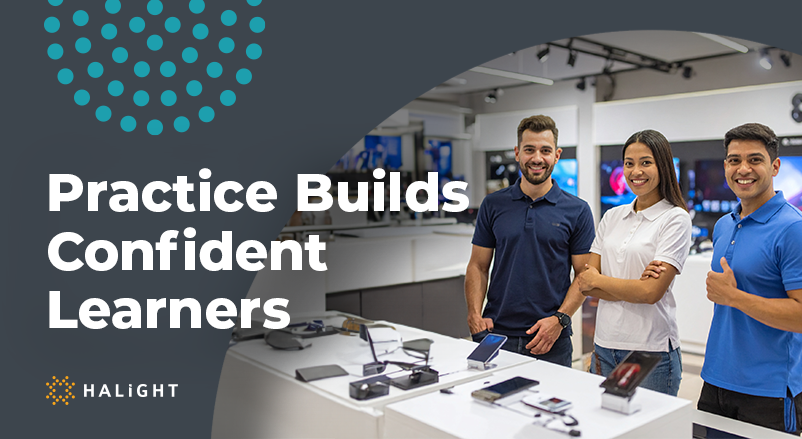Confidence doesn’t come from reading a manual, sitting through a lecture, or memorizing key points. It comes from doing — and more importantly, from doing in an environment where mistakes are not only allowed but encouraged as part of the learning journey.
That’s where safe-to-fail practice comes in. By giving learners the space to experiment, stumble, and try again without high-stakes consequences, we move beyond surface-level understanding and build the kind of confidence that lasts.
What is Safe-to-Fail Practice?
At its core, safe-to-fail practice is the intentional design of learning experiences where learners can test their skills, make mistakes, and receive feedback in a low-risk environment. Think of it as a rehearsal space before the real performance.
For example:
- A sales associate practicing product pitches in a role-play before stepping onto the sales floor.
- A new manager trying out feedback conversations in a simulation before conducting their first real performance review.
- A technician working with a virtual model before handling expensive equipment.
In each case, the stakes remain low while the learning opportunities remain high.
Why It Builds Confidence
- Mistakes Become Learning Opportunities
When errors aren’t punished, they become part of the process. Learners stop fearing failure and start analyzing it: What went wrong? What could I try differently? This reframes mistakes as data, not personal shortcomings.
- Practice Bridges Theory and Reality
Reading about how to perform a task is one thing; practicing it in a realistic context is another. Safe-to-fail practice connects knowledge to tangible actions, reinforcing understanding and building a stronger memory of “how to do it.”
- Small Wins Compound Into Confidence
Every time learners attempt something, adjust, and see improvement, they build momentum. These small successes accumulate, creating a sense of “I can do this” that carries over into real-world performance.
- Psychological Safety Fuels Risk-Taking
A safe-to-fail environment nurtures curiosity and experimentation. Learners are more likely to try bold approaches, test creative solutions, and push their boundaries—because they know the consequences won’t derail their progress.
Designing Your Learning Programs
If you’re building training or educational experiences, ask yourself:
- Where can learners safely experiment? Add role-plays, simulations, or sandbox-style activities.
- How will feedback be delivered? Ensure it’s constructive, specific, and encourages reflection.
- What resources support learners afterward? Provide tools for learners to revisit concepts and try again. How can you make it feel real? The closer the practice resembles real-world conditions, the more transferable the confidence.
Empower Learners
Confidence is knowing that you can recover, learn, and move forward stronger. Safe-to-fail practice doesn’t just build skills; it builds resilient, capable, and confident learners who are ready to face real-world challenges head-on. Let’s talk about how we can build confident RSAs together. Schedule a discovery call with us to learn more!
